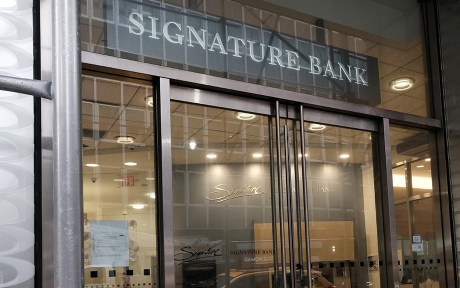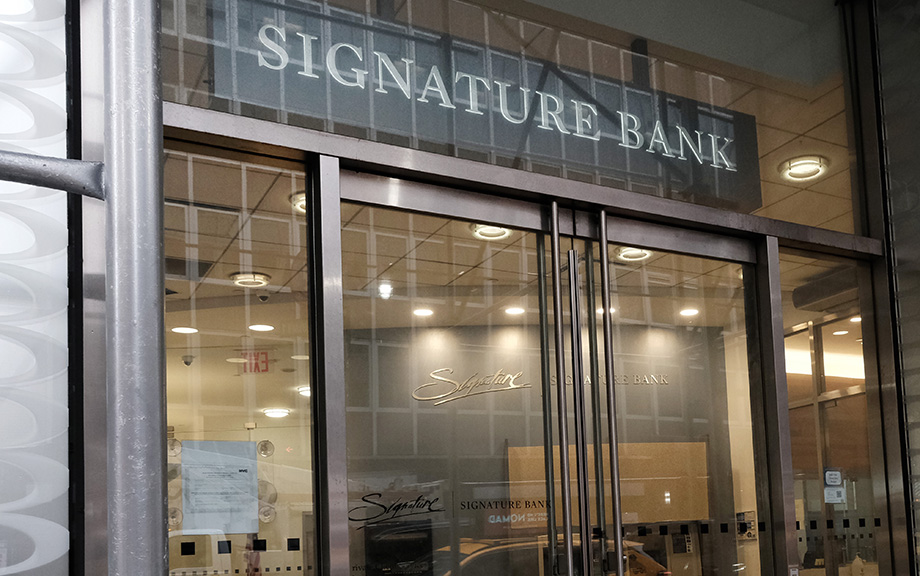
The collapse of Silicon Valley Financial institution (SVB) and Signature Financial institution (SB) has raised questions in regards to the fragility of the banking system. One placing side of those financial institution failures is how the runs that preceded them mirror dangers and trade-offs that bankers and regulators have grappled with for a few years. On this put up, we spotlight how these banks, with their concentrated and uninsured deposit bases, look fairly just like the small rural banks of the Nineteen Thirties, earlier than the creation of deposit insurance coverage. We argue that, as with these small banks within the early Nineteen Thirties, managing the knowledge round SVB and SB’s stability sheets is of first-order significance.
Managing Details about Particular person Banks
Regulators have lengthy acknowledged that public disclosure of banks’ stability sheets is a vital device that helps the market to self-discipline banks (see this work by E. White). Certainly, because the free banking period, banking regulators in the US have required banks to report abstract statistics of their stability sheets to the general public on a periodic foundation.
On the identical time, regulators have additionally acknowledged that in a banking disaster, managing the knowledge setting itself is vital (see this paper for a overview of the idea). In observe, this has typically led to regulators suppressing details about banks’ stability sheets throughout a monetary disaster. A basic instance of this coverage is President Franklin Roosevelt’s declaration of a financial institution vacation in March 1933, an motion that, amongst different issues, suppressed publicly accessible bank-level data in a bid to revive the general public’s confidence within the solvency of the banking system.
Our empirical work offers proof supporting this concept by demonstrating that growing the opacity of a financial institution’s stability sheet throughout a disaster ends in households holding extra of their deposits in that financial institution.
How Does Deposit Insurance coverage Have an effect on Info Administration?
Deposit insurance coverage performs a key position within the administration of details about banks by taking away a depositor’s incentive to observe a financial institution—making depositors information-insensitive. Wanting to keep up some market self-discipline, Congress capped the scale of insured deposits, with the aim of making two sorts of depositors: small, insured depositors and enormous, uninsured depositors. As a result of the bigger depositors stay uninsured, they’re more likely to proceed to observe banks and thus prohibit how a lot danger a financial institution locations on its stability sheet.
At its inception, the Federal Deposit Insurance coverage Company (FDIC) insured deposits as much as $5,000. Utilizing information revealed within the Federal Reserve Bulletin, we discover that in September 1938, 98.4 p.c of accounts at FDIC-insured banks have been insured and about 45 p.c of complete deposits have been insured. Though protection diverse extensively amongst banks, typically the smaller banks reported that insured deposits represented a excessive share of complete deposits and bigger banks reported that they represented a decrease share. For banks that have been smaller in measurement (6,365 banks with complete deposits lower than $5 million), about 89 p.c of deposits have been insured. In distinction, for the biggest 120 banks (these with deposits of over $50 million), roughly 25 p.c of deposits have been insured.
This distribution of insured and uninsured depositors resulted in smaller banks being well-protected from runs as a result of their depositor base was largely insured. This was a pretty characteristic of the coverage for 2 causes.
First, the small banks within the Nineteen Thirties have been native establishments, in that their deposits got here from geographically close by households and their loans have been made to surrounding companies. This geographic focus made depositor runs extra probably as a result of depositors might simply determine and talk with each other.
Second, depositor insurance coverage modified which sorts of depositors had the burden of monitoring banks. On condition that the deposits of most households and small companies have been insured, these depositors now not had an incentive to observe banks’ stability sheets. In distinction, massive companies, monetary establishments, and banks themselves typically held uninsured deposits, and due to this fact retained incentives to observe banks and look at the quantity of danger current on banks’ stability sheets. Certainly, within the Nineteen Thirties when the FDIC was created, banks typically had deposits at different (bigger) banks and these interbank deposits served as a market disciplinary machine. The change during which sorts of depositors have been monitoring banks was enticing as a result of the extra financially savvy varieties have been left monitoring banks on an lively foundation, a method that may probably self-discipline banks whereas averting inefficient runs (in different phrases, runs on wholesome banks).
How Does This Apply to the Runs on Silicon Valley Financial institution and Signature Financial institution?
Because the Nineteen Thirties the U.S. banking system has advanced to an amazing extent. However, the combination protection of the FDIC deposit insurance coverage program in the present day is comparable in share phrases to what it was in 1937. Utilizing latest name experiences information, we discover that 97 p.c of accounts and 48 p.c of complete deposits are insured. So the latest financial institution runs and subsequent discussions of total banking stability don’t appear to mirror points with modifications to the general protection of deposit insurance coverage.
Relatively, we argue that SVB and SB are within the uncommon place of trying just like the small banks of the Nineteen Thirties, earlier than the FDIC supplied deposit insurance coverage. Each SVB and SB had a depositor base that appeared native, in that depositors reportedly interacted with each other of their common enterprise dealings. SVB’s depositors have been related by way of enterprise capital networks and SB’s depositors have been related by way of legislation agency networks. Additional, these depositors have been largely uninsured and due to this fact delicate to (unfavourable) details about their financial institution’s stability sheet. Lastly, the vast majority of SVB’s and SB’s depositors could possibly be thought of financially naïve, a minimum of relative to the monetary companies that drive the vast majority of uninsured deposits in the US in the present day.
Given these traits, each SVB and SB, just like the small rural banks earlier than the creation of the FDIC, ought to have been conscious about the significance of managing the details about their stability sheet. Thankfully, regulators and the banking system at massive are conscious of the significance of managing the knowledge setting, particularly in a disaster. Certainly, coverage makers have repeatedly assured the general public of the soundness of the banking system, and in a public present of confidence, a few of the largest U.S. banks have positioned deposits at First Republic Financial institution, a regional financial institution dealing with rumors about its creditworthiness, in a bid to quell a possible run by depositors. Trying forward, our work emphasizes that banks want to stay conscious of, and actively handle, the details about stability sheet dangers that’s offered to their depositors, particularly in instances of monetary stress. This data consists of basic measures on uninsured deposits and losses on asset holdings, in addition to newer liquidity-based statistics which were put into place because the 2008-09 monetary disaster.
Haelim Anderson is a senior monetary economist on the Federal Deposit Insurance coverage Company (FDIC).

Adam Copeland is a monetary analysis advisor in Cash and Funds Research within the Federal Reserve Financial institution of New York’s Analysis and Statistics Group.
Find out how to cite this put up:
By Haelim Anderson and Adam Copeland, “Banks Runs and Info,” Federal Reserve Financial institution of New York Liberty Road Economics, Might 12, 2023, https://libertystreeteconomics.newyorkfed.org/2023/05/banks-runs-and-information/.
Disclaimer
The views expressed on this put up are these of the creator(s) and don’t essentially mirror the place of the Federal Reserve Financial institution of New York or the Federal Reserve System. Any errors or omissions are the accountability of the creator(s).

